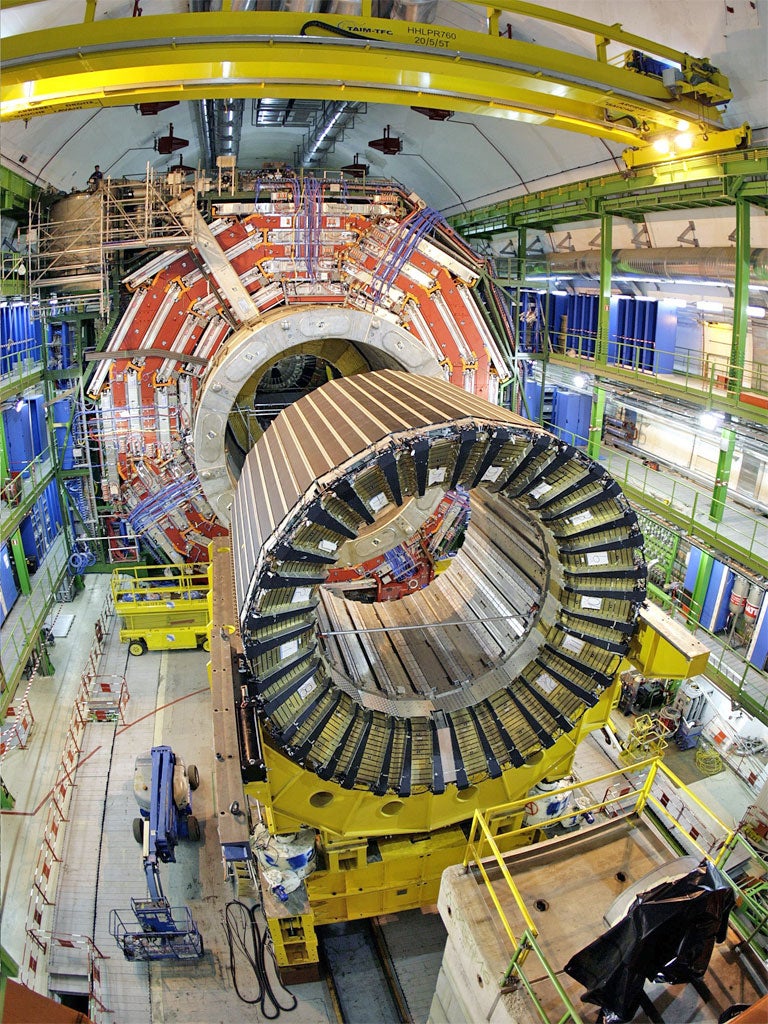Large Hadron Collider team detect 'new particle'

Large Hadron Collider scientists including a group from the UK believe they have detected their first new subatomic particle.
Known as Chi (the Greek X symbol) b (3P), it is a "boson" like the fabled Higgs particle believed to underpin mass.
Chib(3P) provides a new way of combining two other elementary particles, the "beauty" quark and its antiquark, so that they bind together.
Quarks are the building blocks of protons and neutrons, which form the cores of atoms.
They come in six different "flavours" including "beauty", also known as the "bottom" quark.
Unlike the hypothetical Higgs which is not made up of smaller particles, Chib(3P) combines two heavy objects via the same "strong" force that holds the atomic nucleus together.
What is thought to be a clear signal of the particle was found in data from Atlas, one of the Large Hadron Collider's four huge detectors.
The £4 billion particle accelerator, dubbed the "Big Bang Machine", fills a 27-kilometre circular tunnel that straddles the Swiss-French border near Geneva.
It is designed to recreate the conditions moments after the Big Bang that created the universe 13.7 billion years ago.
The new findings are published today in the online scientific archive arXiv.
Dr Miriam Watson, a member of the Collider team from the University of Birmingham, said: "The lighter partners of the Chib(3P) were observed around 25 years ago. Our new measurements are a great way to test theoretical calculations of the forces that act on fundamental particles, and will move us a step closer to understanding how the universe is held together."
Colleague Professor Roger Jones, head of the University of Lancaster group working on Atlas, said: "While people are rightly interested in the Higgs boson, which we believe gives particles their mass and may have started to reveal itself, a lot of the mass of everyday objects comes from the strong interaction we are investigating using the Chib."
Earlier this month scientists said they had seen "tantalising" indications of the Higgs boson from two Large Hadron Collider detectors, Atlas and CMS.
Final proof that the Higgs does or does not exist is not likely to come until towards the end of next year.
The Higgs boson, or "God particle", is the last missing piece in the Standard Model, the leading theory describing the particles and forces that make up the material world.
PA
Join our commenting forum
Join thought-provoking conversations, follow other Independent readers and see their replies
3Comments